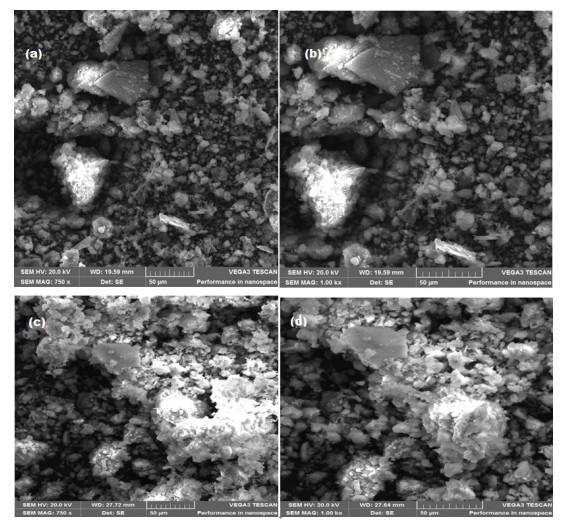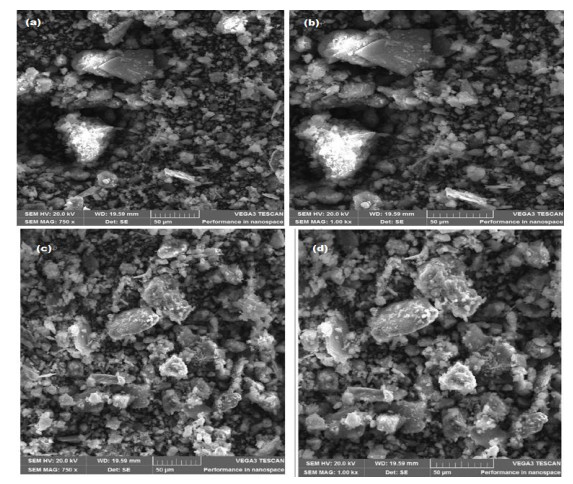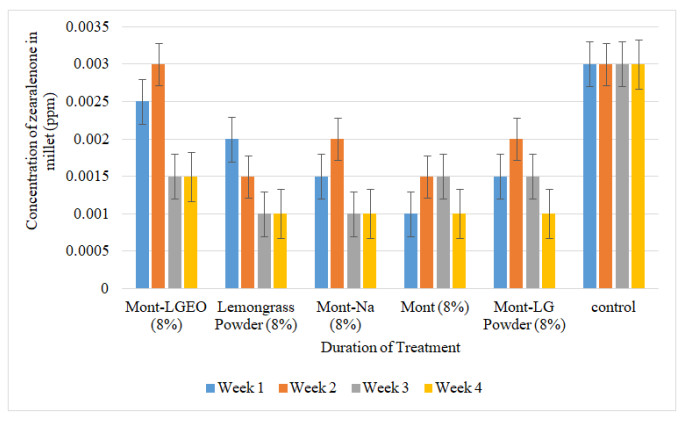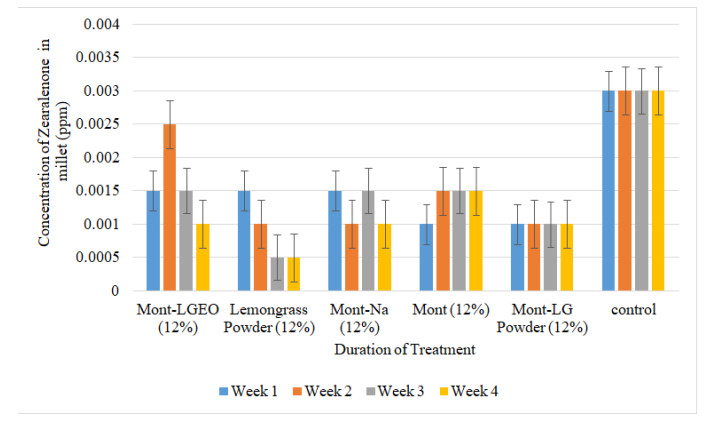Sedentary behaviour is negatively associated with several health outcomes and is particularly problematic among older adults. Knowledge translation tools and public health promotion strategies are needed; however, little evidence is available to inform framing of such tools or development of intervention programs. The aim of the present study was to use data on the perceptions of sedentary time and the programs or supports older adults identify as important for reducing their sedentary time, to inform knowledge translation strategies targeting this population. Focus groups were conducted with four groups of older adults (n = 26) at local seniors' centres (Ontario, Canada). Participants were 74 ± 8.5 years old and were engaging in both sedentary and physical activities in a social environment. Using the Ecological Model for sedentary time in adults, we categorized data into leisure time, household, transport and occupation domains. Intrinsic and extrinsic factors that worked to either discourage or promote sedentary behaviour were identified. Drawing on both groupings of data, results were synthesized to inform public health strategies on appropriate messaging and better uptake of programming and guidelines. For example, successful programs developed on the topic will need to include a social component and a mentally stimulating component, as these were identified as critical for enjoyment and motivation. It was clear from this analysis that sedentary time reduction strategies will need to consider the different domains in which older adults accumulate sedentary time.
Abbreviations: Mont-LGEO: montmorillonite clay incorporated with lemongrass essential oil; Mont-LGP: montmorillonite clay mixed with C. citratus (lemongrass) powder; Mont-Na: montmorillonite clay washed with NaCl; Mont: unmodified montmorillonite clay; ZEA: zearalenone; AFs: Aflatoxins; OTAs: Ochratoxins; DON: Deoxynivalenol; FB1: Fumonisin B1
1.
Introduction
Mycotoxins are secondary metabolites produced by toxigenic fungi, particularly in various food and feed commodities, with most of them detrimental to humans and animals. For instance, AFs are carcinogenic, OTAs are nephrotoxic, while DON is immune suppressive [1]. Of particular interest, is (ZEA), a mycoestrogen or simply referred to as an estrogenic compound [1] produced by several different species of Fusarium such as F. graminearum, F. culmorum, F. cerealis, F. equiseti, F. crookwellense and F. semitectum [2]. Zearalenone is usually produced at pre-harvest, but productivity may persist under extremely bad post-harvest (during storage with a high moisture content of the grain playing a role [3]. The biosynthesis of ZEA by various Fusarium species involves a polyketide pathway [4] with the toxin structurally a resorcylic acid lactone [4] that has been identified as the cause of hyperoestrogenic syndromes experienced by humans [5]. Toxicological studies have shown that ZEA affects the reproductive system, thereby leading to an altered reproductive tract, decreased fertility and enlarged uterus as well as abnormal levels of progesterone and estradiol. Thus, the reproductive cycle of females is the most affected by this mycoestrogen. A reduction in the survival rate of embryos, as well as fetal weight loss due to ZEA exposure during pregnancy, has been reported [6]. The toxicity of ZEA is dependent on its ability to bind to the mammalian estrogen receptor, though with a lower affinity when compared to naturally occurring oestrogen [7].
Zearalenone has also been reported to be hepatotoxic, haematotoxic, immunotoxic and genotoxic [8] with its toxicity not only limited to humans but animals as well. The ingestion of ZEA by animals causes infertility, testicular atrophy, abortion, stillbirths and a reduction in litter size [9], thus, leading to significant economic losses in the animal production sector. Several approaches such as the application of biological, chemical and physical methods for the removal or reduction of mycotoxins have been employed [10] to compromise food poisoning. Some of the physical methods include inactivation by heat, irradiation (gamma radiation or ultraviolet light radiation) [11]. The chemical approaches depend on several chemical agents such as acids, bases, enzymes and oxidising agents, which convert mycotoxins to transformed products with low toxicities [12]. Biological methods on their part, involve the use of microorganisms, such as actinomycetes, algae and yeasts for the degradation of mycotoxins to convert them to compounds with little or no toxicity [13]. These methods are effective for the decontamination of mycotoxins in food and feed.
Nonetheless, there are limitations in their practical applications. For instance, physical decontamination methods are expensive and may cause undesirable changes in the foods and feeds due to high temperatures or other conditions involved [14]. Chemical decontamination processes could cause significant alteration or destruction of the nutritional value and taste of foods and feeds and produce residues that are more toxic than the parent compound as carcinogens and mutagens in the final products [15]. The disadvantages of biological methods include long duration required for degradation, partial degradation and pigmentation of the culture, which may restrict their applications in the food and feed industries.
In recent times, the adsorption approach is becoming more suitable for protection against mycotoxins. Adsorbents as they are collectively called; (activated carbon, clay minerals and resins used to bind and immobilise mycotoxins) are reported in the literature [16,17,18,19]. Adsorption method involves both physical and chemical forces, which help to limit the formation of toxic residues and reduce the toxic impact caused by the parent mycotoxins. Examples of adsorbents used against various mycotoxins are activated carbons, synthetic polymers (cholestyramine, polyvinylpyrrolidone), humic substances, dietary fibres and clay minerals [16]. Yeast (a common example being Saccharomyces cerevisiae cell wall components) have also been used sometimes in conjunction with hydrated sodium calcium aluminosilicate to reduce the toxic effects of mycotoxins [17] Out of the listed methods, clay minerals have gained more attention because they are chemically stable, have excellent adsorption properties and are biocompatible with humans and animals. Besides, clay minerals are green, inexpensive and have low toxicities. The various clay minerals employed in the adsorption of mycotoxins include montmorillonite, kaolinite and halloysite. Montmorillonite is one of the most representative clay minerals preferred in adsorption studies because of its high cation exchange capacity, high surface area and swelling capacity [18,19].
Montmorillonite clay can be modified using various methods and modifiers [20]. It is widely used in the food and feed sectors as a chitosan/clay nanocomposite to immobilise proteolytic enzyme- bromelain from pineapples, which is involved in the reduction of haze in white wine [21]. Organophilic montmorillonite clay has also been used in the adsorption of ZEA [22] same as for the adsorption of dyes [23,24], phenolic compounds and other aromatic compounds [25] as well as pesticides [26]. Montmorillonite is a dioctahedral 2:1 phyllosilicate made up of two tetrahedral sheets (T:O:T) and one octahedral sheet. It has an interlayer space between each triple-sheet-layer and possesses a negative residual charge due to isomorphic substitutions in the tetrahedral sheet of Si4+ by Al3+ and Al3+ by Mg2+ in the octahedral ones.
Some plant extracts have also been utilised in the reduction of mycotoxins in cereals. For instance, essential oils of basil, anise, clove, cinnamon, lemongrass, lemon, spearmint and oregano have been shown to have inhibitory effects on Fusarium graminearum, F. proliferatum and F. verticillioides that are principal producers of (DON, FB1 and ZEA in corn and wheat [27]. Cymbopogon citratus (lemongrass) has also been applied for the reduction of Aspergillus species and aflatoxin in maize [28]. Cymbopogon citratus, commonly consumed as tea, is used in the treatment of cold, cough, fever, and stomach upsets [29]. Phytochemical composition of Cymbopogon citratus shows that it contains saponins, alkaloids, tannins, steroids, phenols, anthraquinones, and flavonoids, with therapeutic and protective effects [29]. The therapeutic effects of C. citratus can be attributed to its anti-amoebic, antimalarial, antimycobacterial antibacterial, antidiarrheal, anti-filarial, anti-inflammatory, antifungal, antimutagenic, antioxidant and hypoglycemic properties [30].
Cymbopogon citratus is considered relatively safe for consumption, but caution should be against taking it in high doses and for prolonged periods by both healthy and unhealthy individuals [31]. Cymbopogon citratus has insignificant levels of anti-nutrients such as phytate [31] and the absence of some heavy metals in the plant [29,31,32].
Detoxification strategies involving synthetic and naturally occurring compounds such as organic acids, calcium hydroxide mono-methylamine, ammonium hydroxide, hydrogen peroxide, hydrochloric acid, formaldehyde, bisulphite, chlorinating agents and ammonia have been applied in the removal of mycotoxins [10]. Owing to the limitations in other decontamination methods of mycotoxins, this study evolved following a greener route that involved the use of montmorillonite clay in combination with extracts and biomass of Cymbopogon citratus (lemongrass) to decontaminate ZEA in millet. We herein report that the modified clay X-ray diffraction revealed the mineral phases involved in the decontamination of ZEA in millet.
2.
Materials and methods
2.1. Materials
All the solvents used in this study were of analytical grade unless specified otherwise. These included LC gradient grade 99.9% methanol (LiChrosolv Reag. Ph Eur, Merck, Germany), LC gradient grade 99.9% acetonitrile (LiChrosolv Reag. Ph Eur, Merck, Germany), LC gradient grade 99.9% formic acid (Fluka 56302-50ML-F, p. a, Thermofisher Inc, Norway) and deionized water. The mycotoxin standard - ZEA and NaCl were purchased from Sigma-Aldrich (Bornem, Belgium).
The montmorillonite clay used was montmorillonite K10 powder (CAS number 1318-93-0) from Sigma-Aldrich, Germany with 99.9% purity and molecular formula; Na2/3Si8(Al10/3Mg2/3)O20(OH)4.
Cymbopogon citratus (lemongrass) leaves were identified at the Botany Unit of the Department of Biological Sciences, Covenant University, Ota, Nigeria. Other solvents used in this study were 99.9% Hexane (pro analyse, Merck, Germany), and HPLC grade 99.8% acetone (Sigma-Aldrich, Germany). Five hundred g dry powder of lemongrass were used for direct application to millet grains, while an equal portion of the same powder was mixed with unmodified montmorillonite clay and extracts were obtained from the remaining 600 g of the powder and used in the study.
2.2. Sample preparation
The leaves of lemongrass were rinsed in distilled water to remove dust particles and then air-dried at room temperature 28 ± 3 ℃ for 3 weeks. After drying, the leaves were cut into smaller sizes and pulverised with the aid of an electric blender (IKA M20, USA). The extracts of lemongrass were obtained by Soxhlet extraction method as described by [33]. Twenty-five g of dried lemongrass powder was extracted with 250 mL of hexane. The extract was concentrated by rotary evaporation (IKA RV10, Germany) to obtain the essential oil used in this study. A nanocomposite was formulated using montmorillonite clay, and Cymbopogon citratus (lemongrass) extracts according to the modified method of Noudem et al. [26]. Twenty-five g of purified clay (Montmorillonite K10, Sigma-Aldrich powder) was modified with 50 mL essential oil solution of Cymbopogon citratus. The montmorillonite clay was homogenized with a NaCl solution (1 mol L-1), with a solid: liquid ratio (1:20). The ion exchange was realized at 25 ℃. Thereafter, the composition was washed using deionised water periodically to remove chloride ions. The ion-exchanged samples were slowly dried at 40 ℃ to avoid rapid evaporation of water from the clay. Twenty-five g of clay powder (Mont-Na) was dispersed in 50 mL of essential oil solution (v/v) in a 500 mL flask using acetone as the solvent. The mixture was swirled in an overhead shaker at 50 revolutions per min at room temperature (25 ℃) and equilibrated in an overhead shaker at room temperature (25 ℃) for 3 hours. Thereafter, the mixture was placed in a water bath set at 60 ℃ for 90 mins to completely evaporate acetone. The obtained (Mont-Na-C. citratus) mixture was allowed to dry overnight at a temperature of 30 ℃ before storing in coloured and sealed vials. The second formulation was prepared by mixing an equal mass of montmorillonite clay and Cymbopogon citratus powder. The third formulation was montmorillonite washed with 1 mM NaCl 1:20 (w/v). Unmodified Montmorillonite K10 and C. citratus powder served as a negative control.
2.3. X-ray diffraction
Dried samples were heaped up in a conical shape into the sample holder ring and smoothened with the aid of a glass slide to ensure the even distribution of particles. The X-ray diffractometer measurements were taken with the aid of an X'Pert PRO PW 3050/60 diffractometer. The technique was followed with Cu-Kα radiation (n = 1.54060A°) at 40 kV and 40 mA. The scan ranged from 4.0084 to 89.9774° with a step size of 0.0170° and a scanning rate of 2°/min.
2.4. Scanning electron microscopy (SEM)
The SEM for the various samples were performed. All the samples were carbon-coated to enable the surface of the mineral to be conducive for microscopy. The mineral morphology and mode of occurrence of various clay mixtures were examined directly with SEM without polishing with the aid of VEGA3 TESCAN scanning electron microscope with a voltage of 20 kV and a magnification of 750x and 1000x.
2.5. Application of nanoformulations for the reduction of zearalenone in millet
For the quantification of zearalenone, the apparent recovery was obtained by spiking a known amount of zearalenone to a blank. The blank was spiked with 0.25 and 1 µL of the zearalenone reference standard. The level of ZEA in millet was determined by liquid chromatography-tandem mass spectrophotometry (LC-MS/MS) as previously described [34] before the application of nanoformulations. Accordingly, 5 g of ground millet sample was extracted with 20 mL of acetonitrile/water/formic acid (79:20:1, v/v/v) in a 50 mL polypropylene tube (Sarstedt, Nümbrecht, Germany) for 90 min on a GFL 3017 rotary shaker (GFL, Burgwedel, Germany). Five hundred (500) µL of each extract was then filtered with a 0.2 μm Millipore syringe filter and transferred into a Restek 2 mL amber vial (USA) before injecting into the LC-MS/MS system.
The formulations were applied at concentrations of 8 and 12% (w/w) in duplicates to millet grains in 250 ml conical flasks and stored at 30 ℃ for four weeks according to the modified method of Atanda and Olopade [28]. A millet sample from the same treatment batch was also subjected to the same storage condition as the treated samples over the same period to serve as a control. The level of mycotoxin in the treated millet with various formulations were determined after a storage period of 4 weeks using LC-MS/MS protocol described by Sulyok et al. [34].
2.6. Statistical analysis
Post-hoc analysis was used to compare the efficacy of the various formulations from clay applied in duplicates at a concentration of 8 and 12% over 4 weeks. Subsequently, the least significant difference (LSD) was used to compare mean values among the various treatment formulations for the decontamination of ZEA and considered to differ at p
≤ 0.05.
3.
Results and discussion
3.1. X-ray diffraction
The X-ray diffraction patterns were indexed and found to agree with (JCPDS 43-0688) as referenced by Wu et al. [35]. The X-ray diffraction patterns of montmorillonite-lemon grass essential oil, lemongrass powder, montmorillonite-Na, montmorillonite and montmorillonite-lemongrass powder are shown in Figure 1. The diffractograms showed that quartz and montmorillonite were the main phases present in the samples. A peak was also observed at the 2-theta value of 26.56° denoted by Q for all formulations containing montmorillonite clay showing the presence of quartz in the base material (Figure 1). The X-ray diffraction patterns of the various formulations with montmorillonite clay had similar peaks but with varying intensities at 2-theta value 26.56°.
The X-ray diffraction patterns were similar; wherein all clay fractions displayed peaks for montmorillonite and quartz. The diffractograms showed that quartz and montmorillonite were the major phases present in the samples. There was no sharp peak present in lemongrass powder (LGP) indicating that it is not crystalline. However, the peak at 22° revealed the presence of amorphous silica (Figure 1). The X-ray diffraction patterns of the three modified montmorillonite clays showed varying intensities in the peaks present. Only the peak for lemongrass powder was broad (Figure 1). The peak at 20.06° (02, 11) denoted by M represents montmorillonite while the 2-theta value of 26.56° (101) represented by Q shows the presence of quartz similar to the report by [36] and [37]. The peaks listed above had higher intensities for the formulations containing lemongrass (Figure 1).
Quartz showed a higher intensity compared with clay without lemongrass. Studies have shown that lemongrass powder contains amorphous silica, which occurred at 2-theta value; 22° [38]. Therefore, the presence of silica that occurred at 22° made the intensity of formulations with lemongrass extract higher than those without lemongrass.
3.2. Scanning electron microscopy (SEM)
The scanning electron micrographs of unmodified montmorillonite powder (Mont), the base material for the various formulations are shown along with those of other formulations comprising of montmorillonite-lemongrass essential oil (Mont-LGEO), montmorillonite-lemongrass powder (Mont-LGP), montmorillonite-Na and lemongrass powder (LGP) at various magnifications: 750x and 1000x (Figures 2 to 5), respectively. The formulations with clay (Figures 2 to 4) had similar appearances and were seen as agglomerates, while lemongrass powder (LGP) had cylindrical fibres (Figure 5). The SEM micrographs showed that Mont-LGP (Figure 3) had larger microstructures than Mont. and Mont-Na. The structure of lemongrass powder is cylindrical, which contributed to the larger size of Mont-LGP, while Mont-LGEO that contained the essential oil of C. citratus had small particle agglomerates. Montmorillonite washed with NaCl (Mont-Na) had slightly larger microstructures than montmorillonite, while Mont-LGP had larger microstructures compared with Mont. and Mont-Na. According to Alvarez-Acevedo et al. [39], the presence of agglomerates is characteristic of materials with very fine grain size.
3.3. Evaluation of zearalenone decontamination in treated millet
The recovery data for zearalenone is shown in Table 1, and its method performance was adequate, showing a recovery rate of 99.30%. The various nanoformulations applied to the millet samples from the same batch were effective over the treatment period of 4 weeks. The concentration of ZEA in the millet sample (control) before treatment with the nanoformulations was 0.03 ppm. The millet sample was kept under the same storage conditions as the treated samples, and the concentration (0.03 ppm) remained unchanged at the end of four weeks (Figures 6 and 7).
The Post-hoc analysis data generated showed there were significant differences between the five treatments compared with the control at (p = 0.05). Further statistical analysis using the Least Significant Test (LSD) test to compare mean values among the various treatment formulations for the decontamination of ZEA revealed that lemongrass powder at a concentration of 12% was the most effective treatment against ZEA in millet (p = 0.05). In the study by Atanda and Olopade [28] who applied lemongrass powder for the decontamination of AF in maize, it was revealed that the rate of aflatoxin B1 (AFB1) decontamination in maize grains was dependent on incubation time and dose of treatment.
The second most effective formulation was montmorillonite clay mixed with lemongrass powder (Mont-LGP) at a concentration of 12%. Unmodified montmorillonite (Mont) at a concentration of 12%, montmorillonite washed with NaCl (Mont-Na) at a concentration of 8% and lemongrass powder at a concentration of 8% were active at the same level in decontaminating ZEA in millet. Both lemongrass powder (LGP) and Mont-LGP at 8% concentration showed a 66% decrease in the level of ZEA at the end of 4 weeks (Figure 6). Lemongrass powder (LGP) at 12% concentration showed a 98.3% decrease in ZEA level after 4 weeks, while Mont-LGP at 12% concentration showed a 66% decrease in the level of ZEA after 4 weeks (Figure 7). The increase in the concentration of ZEA levels within the second and third week for some of the treatments could be as a result of 'matrix effect', which led to an overestimation of zearalenone in the treated samples. The interaction between the formulations and the millet sample also determines the effectiveness of the treatment regardless of the duration of treatment. The effectiveness of LGP (Figure 2) is traceable to the hydrophobicity of the lemongrass powder, which contains volatile compounds that are hydrophobic. The phytoconstituents in lemongrass are essential oils that contain citral α, citral β, citronellal, geraniol, nerol, geranyl acetate, terpinolene, terpinol methylheptenone and myrcene, while the flavonoids and phenolic compounds include luteolin, quercetin, isoorientin 2'-O-rhamnoside and apigenin and kaempferol [30]. Adegoke and Odesola [40] reported that the inhibitory activities of lemongrass are linked to its phytochemical components like tannins, alkaloids and glycosides, which are present in the powder.
Montmorillonite-LGP was the second most effective. The montmorillonite clay had previously been modified with organic cations from the lemongrass powder, which increased the hydrophobicity of the surface of the minerals present, thereby increasing its affinity for ZEA [41]. Zearalenone is also known to be a non-polar mycotoxin. Hence, it is hydrophobic [42].
Furthermore, Wang et al. [43] claimed that modified organomontmorillonites were more effective as mycotoxin adsorbents than raw montmorillonites. The second most effective treatment, Mont-LGP at a concentration of 12% is also hydrophobic due to interactions between cations from the lemongrass powder and the clay surface. The hydrophobicity of Mont-LGP allows moisture to be repelled in stored cereals, which can help extend its shelf-life. Montmorillonite modified with organic ions, molecules or polymers have been utilised as adsorbents to decontaminate mycotoxins from cereals. Some of the cationic surfactants for the modification of montmorillonite include benzalkonium chloride (BAC), dodecyl trimethyl ammonium bromide (DTAB), cetyl trimethyl ammonium chloride (CTAC) and cetyl trimethyl ammonium bromide (CTAB) [44]. Zearalenone was effectively removed by these organomontmorillonite clays, but concerns were raised about their toxicity [44]. The use of plant extracts such as C. citratus in combination with montmorillonite is more advantageous than synthetic chemicals because it is biocompatible and inexpensive. Montmorillonite possesses low cytotoxicity both in vitro and in vivo with no relevant cytotoxic effects noted in mice, even at a high dosage of 1000 mg kg-1. Based on these findings, montmorillonite is a suitable carrier system for several drug molecules [45]. Hence, it can be effectively employed in the decontamination of mycotoxins.
4.
Conclusion
Lemongrass powder (LGP) and Mont-LGP were the most effective for the decontamination of ZEA in millet. The organo-cations complex in lemongrass powder could be responsible for this effectiveness in the adsorption of ZEA in millet. The use of Mont-LGP and LGP can thus serve as a sustainable intervention for the decontamination of ZEA in stored cereals especially as the method is cost-effective, user-friendly and easy to disseminate for use in both the food and feed industries.
Acknowledgements
The authors would like to thank Dr Riaan Meyer and Mr Darryl Harris from Shimadzu, South Africa, for their technical assistance on the use of LC-MS/MS instrument, LEAP-Agri and National Research Foundation of South Africa Co-funded project: Towards Europe Africa Funding and Research Alliances as well as Covenant University, Nigeria, for their support towards the publication of this work.
Conflict of interest
The authors declare no conflicts of interest in this paper.
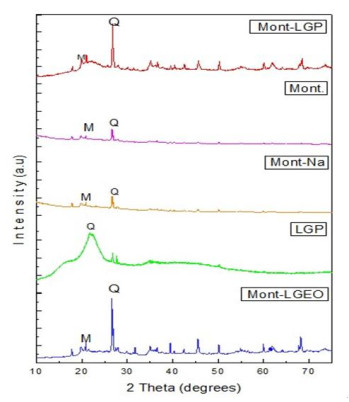









 DownLoad:
DownLoad:
